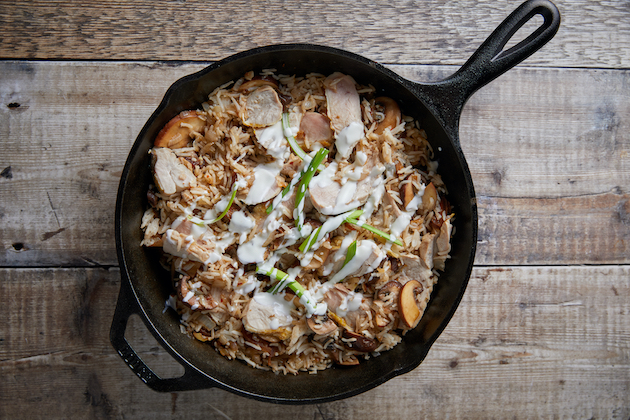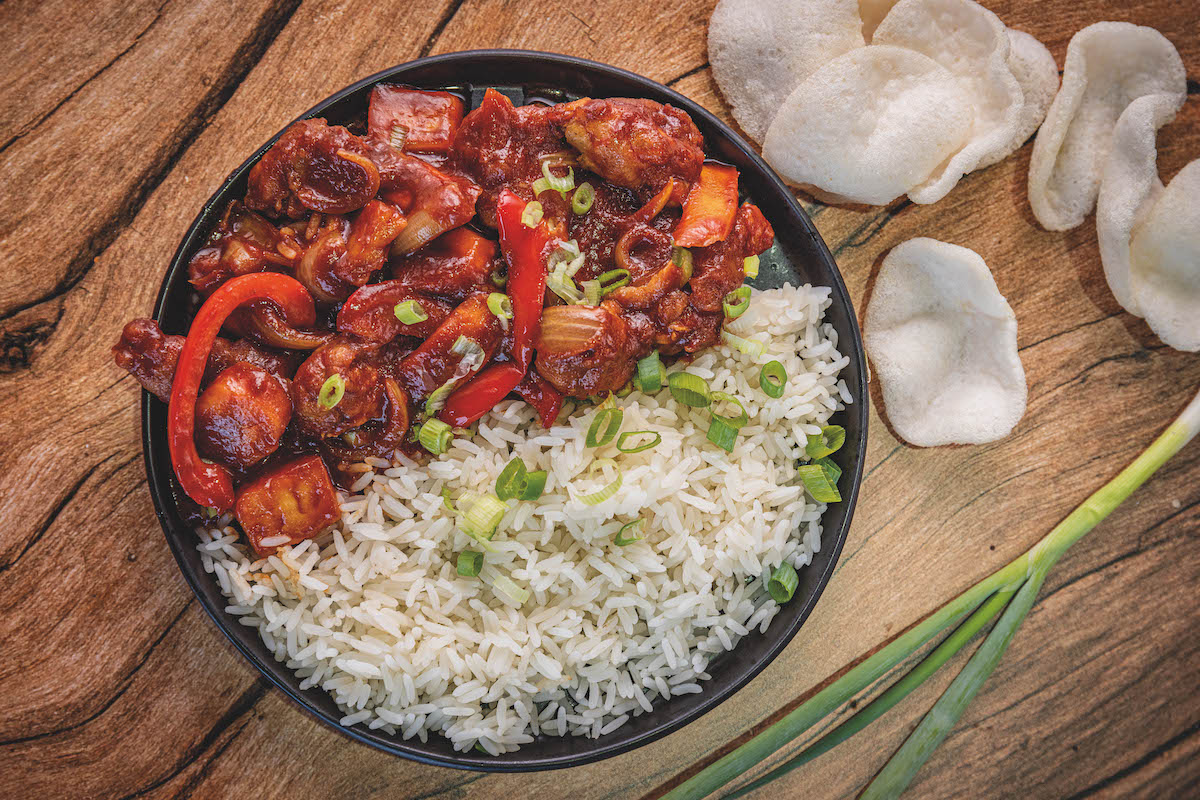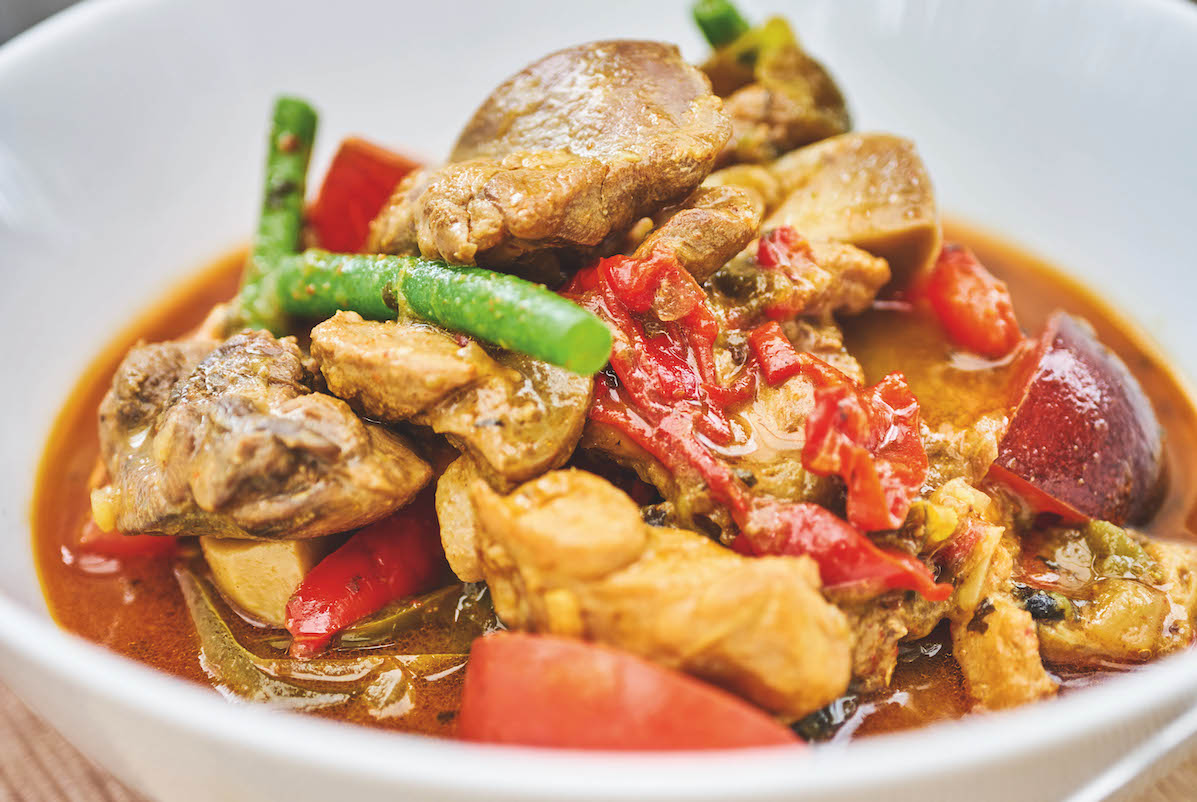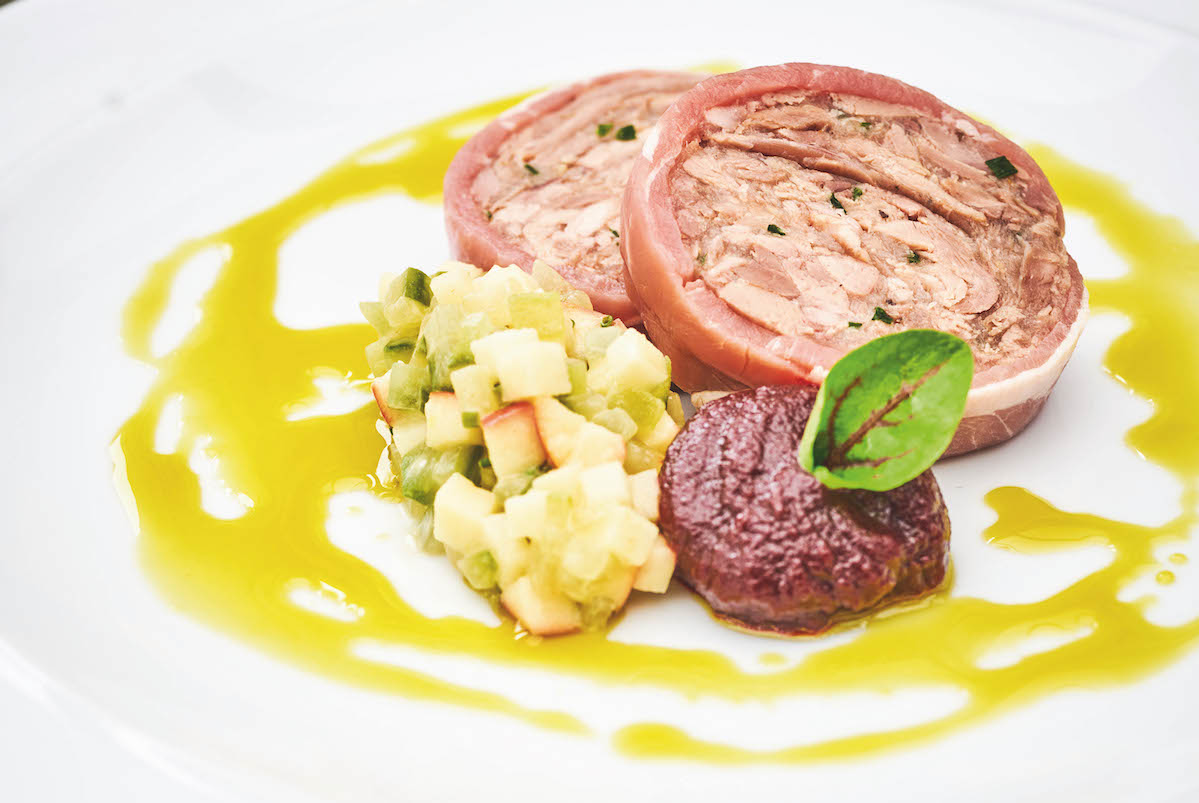Spicy pheasant pilaf recipe inspired by Elizabeth David
Elizabeth David’s wartime dash across Europe to Egypt provides the inspiration for Rose Prince’s off-the-cuff spicy pheasant pilaf recipe. Serves four.

Spiced mushroom pilaf with pheasant, with a sweet yogurt sauce.
Spiced mushroom and pheasant pilaf
Ingredients
- 1 pheasant
- 2 tbsp melted butter, plus 1 tsp vegetable oil, for frying
- 350g long-grain rice or basmati rice
- 3 tbsp extra virgin olive oil
- 1 large white or brown onion, finely chopped
- 3 cloves
- 1 small cinnamon stick
- ½ tsp whole cumin seeds
- 3 cloves garlic, finely chopped
- 2 pinches ground allspice
- ½ tsp ground coriander seed
- 10 dried apricots, sliced
- 20 small chestnut mushrooms, sliced
- To serve flat-leaf parsley, chopped
- 6 tbsp thick yoghurt, sweetened with a little honey
Method
- Start the preparation of the pheasant pilaf by filleting the breast meat from the pheasant in two whole pieces, then setting aside. Remove the legs, then cut up the pheasant carcass with game scissors. Put the legs and bones in a small casserole dish, add a little oil and fry until browned. Add 600ml of water, bring to the boil, cover and simmer for one hour. Drain, reserving the stock. Remove the meat from the legs and set aside.
- After seasoning the pheasant breasts, gently fry them in the butter and oil mixture. Ideally, they should be only just cooked, still juicy in the centre. Judge this by pressing with a finger. As soon as they feel firm, remove them from the pan.
- Wash the rice in a sieve under a tap until the water runs clear. Put the rice in a pan with 500ml of stock, or water if there is no stock. Add a pinch of salt and stir in one teaspoon of oil. Bring to the boil and cook until tender, not soft. Drain any excess liquid from the pan.
- Put the olive oil in a large frying pan and add the onion, cloves, cinnamon stick and cumin seeds. Fry gently over a low heat until the onion turns pale gold, then add the garlic and remaining spices. Cook for another minute or so, then add the apricots with the mushrooms. When the mushrooms have softened, stir in the rice. Season to taste with a little salt and pepper.
- Once it has warmed through properly, slice the pheasant breast and add with the leg meat. Serve with parsley thrown over the top and the sweetened yoghurt on the side.
Notes on this pheasant pilaf recipe
The very first pilaf I made was from a recipe in A Book of Mediterranean Food by Elizabeth David. Published in 1950, the English food writer’s book is widely acknowledged to have sparked the British love affair with food from far more sunny shores. David had spent the whole of World War II in Europe. In the south of France when war broke out, she could not escape by travelling north so headed south. She was arrested in Italy, sent to Yugoslavia and then crossed to Greece, where she lived for a time. When the Nazis came, she fled to Egypt.
If you are wondering where I am going with this bit of history, Egypt is where she discovered pilaf. She called her recipe Suleiman’s Pilaf, after the cook who made it for her. There are many versions of the rice dish. David’s is a leftovers pilaf, in that the rice and meat (lamb) are pre-cooked.
You can make a pilaf in a pan from scratch, adding uncooked rice to fried onion and then covering with liquid. You can start with a meat base, add onion then the rice and liquid, before baking in the oven. Whichever recipe you make, the essential elements must be there: onion, cooked until golden and sweet with some fragrant spice and something sweet, such as golden sultanas or apricots, plus poultry, game or perhaps a vegetable, such as pumpkin or squash. Always serve it with a little sweetened yoghurt and maybe some toasted pine nuts — but always make it your own. Enjoy this pheasant pilaf.








